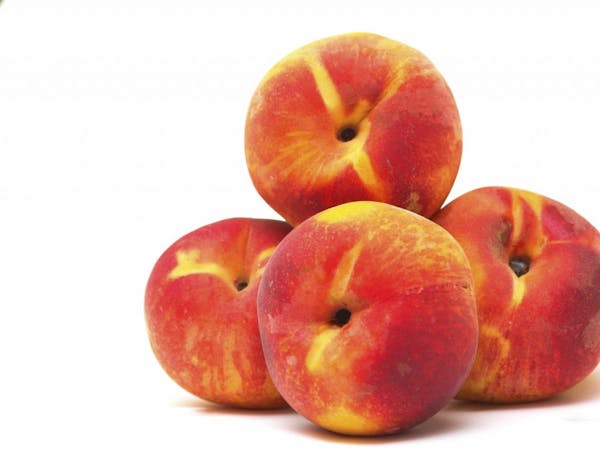It's the season for stone fruits.
Peaches, nectarines, apricots, plums and cherries are ready for eating. Named for their pits, which are hard as stone, the fruits have a fleshy, edible outer layer covered with a fuzzy or smooth skin.
They yield wonderful goodies as slices of the fruits remain intact even after baking, but soften to the point that the juices and sugars burst out when you take a bite. That's because unlike most other fruits, which turn to mush in the oven, stone fruits hold their shape well.
Still, as intact as the fruit slices stay when baked, their juices can't be contained, so a pie or tart crust is at risk of becoming soggy if you don't take some precautions. Put the fruit in the oven before adding them to a crisp, which allows the excess juice to leak out first.
You can also add some cornstarch or tapioca to soak up the juices. If you're still nervous about leakage, bake a crumb top. It'll work both as a sponge, absorbing the juices, and a porous cover, letting the gases move out.
Cindy Javor, a registered dietitian and nutritionist at Penn State Extension, recommends blanching stone fruits — first placing them in boiling water, and then in cold water — before slicing and dicing them. "That will help them not to lose their juices," she said.
To prevent the cut stone fruits from turning brown, add some vitamin C, such as lemon or lime juice.
Juicy fruits are ideal candidates for baked goods, but removing their pits can be a challenge. Cut the fruit in half along the pit, and then twist it on both sides so that the pit either comes out or remains on one side.
Also make sure to buy freestone, instead of cling, peaches. The former has a pit that separates easily from the flesh, but the pit in cling peaches, as the name indicates, can cause some trouble for the baker. Fortunately, most fresh peaches sold are freestone.
Sometimes the fruits are sweet and delicious by themselves, but when baked, they end up being so tart that they cannot be balanced out with sugar, butter and eggs. (The peach muffin recipe, for instance, was a recipe that originally called for plums. But when we baked the plum muffins, we found that they tasted rather tart, so we decided to go back to the mixer and go with peaches instead.)
Eliza Bowman, owner of Eliza's Oven at Pittsburgh Public Market, said, "When sugar in some fruits is not processed and gets super heated, the sweetness dissipates." That might explain why the plums were not as sweet when baked. One way to retain the sweetness is to cover the fruit dish with foil before baking it. She also said that the plum's skin is tart to begin with, and it only gets more tart when baked.
Some of the best stone-fruit baked goods come from combining sweet and tart flavors. Raspberries and peaches are a classic combination for pie filling. Ripe apricots and lemon zest can cook down to an intense tangy sweetness in the oven.

Gophers football coach P.J. Fleck lists 'resort-style' Edina home for $3.9 million
Mexican film wins top prize at Moscow International Film Festival while major studios boycott Russia
Why you might have heard Paul Simon's 'The Sound of Silence' at Spanish Mass

Minneapolis native Poppy Harlow parts ways with CNN

